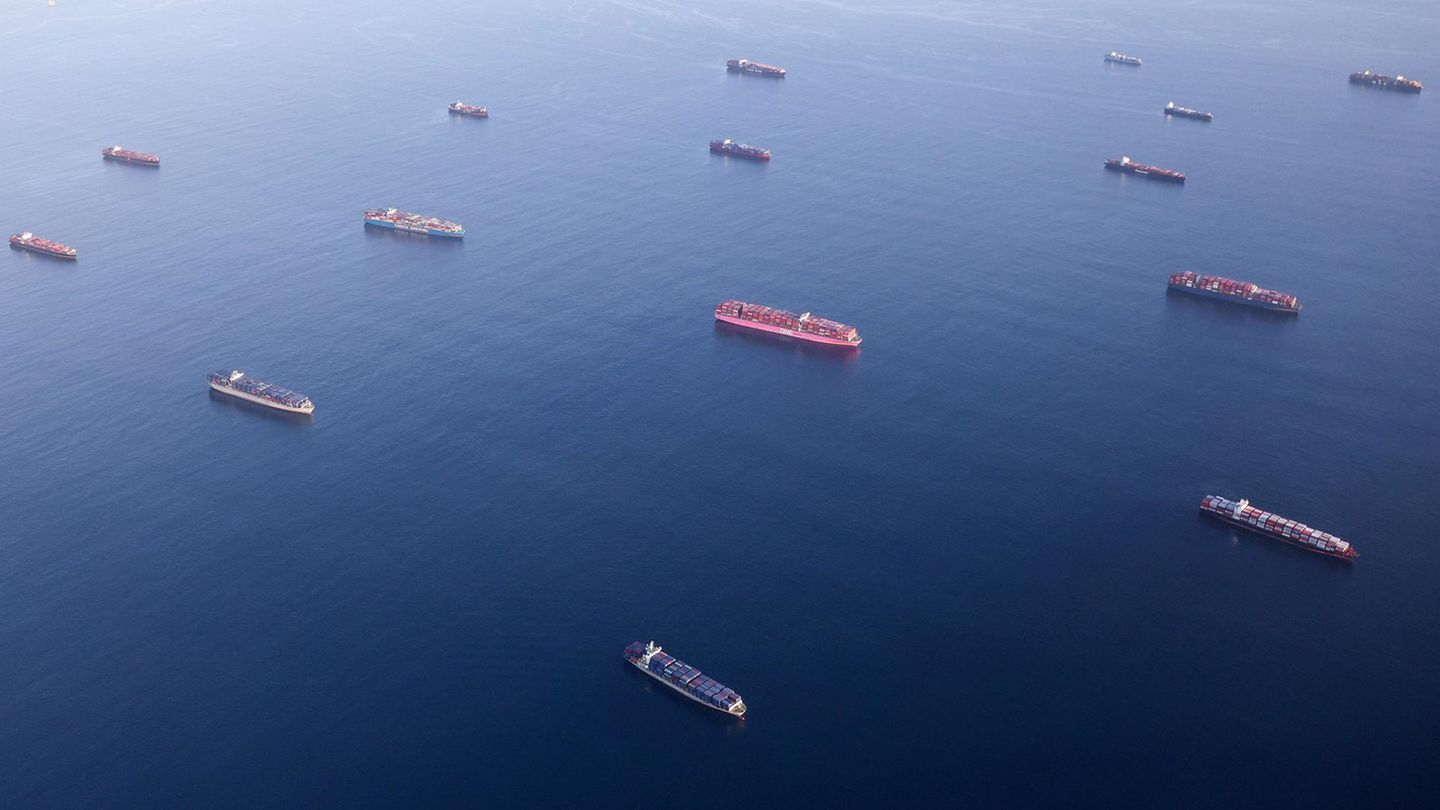Never before have so many freighters waited in front of the ports of Los Angeles and Long Beach to be cleared as they are now. The consequences could also be felt under the Christmas tree – if there is one.
Traffic jams are anything but unusual in Los Angeles. But what the metropolis in the US state of California is currently experiencing exceeds anything that has been seen before – and is also taking place on the water. The record number of 73 loaded cargo ships waited outside the ports of Long Beach and LA for their clearance last Sunday. On Monday it was, according to the non-profit organization for the promotion of sea trade,, 70 and on Wednesday 62.
The loading capacity of the waiting freighters was 432,909 TEU on Monday, the abbreviation stands for the English twenty-foot equivalent unit and means the equivalent of a 20-foot standard container. To put the number into perspective: 432,909 TEU are more than the incoming container volume that was handled in the port of Long Beach in the entire month of August. The combined import throughput from Los Angeles and Long Beach amounted to 893,118 TEU in August.
Hardly any trucks or drivers, but huge demand
The Port of Los Angeles also publishes the average waiting time it takes a ship to reach one of its berths. On Tuesday, the value rose to an all-time high of nine days.
Assuming that the ships waiting off the coast are all fully loaded according to their capacity and the terminals are able to process them at the same pace as in August, the queue could only be completely cleared if no further freighters arrived for 14 days, analyzed Freightwaves the location. Not only will that never happen anyway, there is also no decrease in the number of arrivals in sight. Instead, the data showed a sustained stream of container ships sailing across the Pacific to Los Angeles.
According to media reports, the mega-jam in front of America’s busiest port complex, in which 40 percent of the country’s imports are handled, results from a shortage of trucks and drivers for the onward transport of goods and a simultaneous overwhelming demand for imported consumer goods. Shipping traffic has increased by 50 percent compared to the time before the corona pandemic,.
“American purchasing power is so strong and monumental that we are unable to put all of this cargo into the domestic supply chain,” CBS quoted Port of Los Angeles director Gene Seroka as saying.
Toys and artificial Christmas trees could become scarce
For retailers and consumers in the US, this could mean that they won’t get the goods they want in the time they want, especially when it comes to the holiday season. Experts are already warning of possible bottlenecks and delays in all products, from toys to artificial Christmas trees. “It’s a problem that extends from the loading docks in China to the loading docks of retailers in the United States,” Steve Pasierb, president of the Toy Association, told ABC News last week. “Most of the problem is that sea transportation is extremely expensive and takes much longer than ever before.”
And retail analyst Hitha Herzog stated, “The global supply chain is pretty much broken. We’re seeing a shortage of products that were originally intended for shipping. And we’re also seeing a delay when those products hit stores.” Smaller retailers have relied on a very fast supply chain in the past, Herzog told ABC News. But now both the supply chain and deliveries were causing problems.
Pasierb therefore advises consumers to hurry: “Whatever the trendy toy of the season in the next month or two may not be available in large quantities,” warned the Toy Association president. “Now, in the holiday season, from Labor Day to the beginning of October, there is the best selection and the best shopping.”
Sources: , , , ,
Jane Stock is a technology author, who has written for 24 Hours World. She writes about the latest in technology news and trends, and is always on the lookout for new and innovative ways to improve his audience’s experience.




